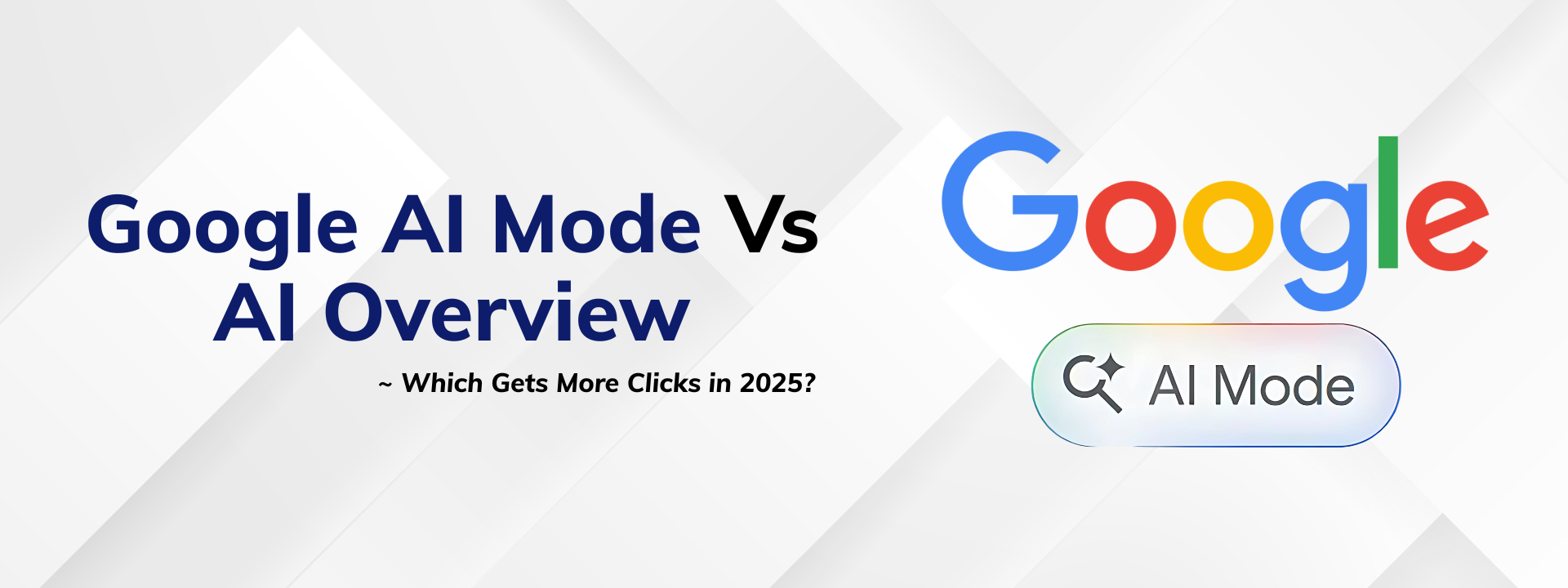Google’s launch of AI Mode signals a new era of search, one that prioritises dynamic conversations over static results. While AI Overviews brought generative summaries to the top of search pages, AI Mode goes further, offering an opt-in, interactive experience that reshapes both user behaviour and brand visibility.
As search becomes more personalised and conversational, marketers, SEOs, and brands must understand the key differences between AI Mode and AI Overviews, and what these changes mean for search strategy in 2025 and beyond.
What Is Google’s AI Mode?
AI Mode is an immersive, AI-powered interface within Google Search that transforms how users explore information. Unlike passive AI Overviews, which simply summarise content, AI Mode enables users to:
-
Ask follow-up questions conversationally
-
Browse contextual suggestions and next steps
-
Receive results across Google products like Maps, Shopping, and Flights
This shift reflects a fundamental change: users are not just searching for links and websites, they are engaging with knowledge and valuable content.
AI Mode vs AI Overviews: What’s the Difference?
|
Feature |
AI Overviews |
AI Mode |
|
Availability |
Auto-displayed for some queries |
Opt-in via Search Labs (as of mid-2025) |
|
Format |
Static AI summary at the top of the SERP |
Full-screen interactive, chat-like experience |
|
User Interaction |
One-off summary |
Ongoing conversation with follow-up capabilities |
|
Source Attribution |
Inline citation of 1–2 sources |
Multi-source citations with synthesised AI output |
|
Personalization |
Limited |
Highly personalised via user queries and context |
Featured Snippets Position Declining
Featured Snippets were once seen as the most valuable spot in SEO, but are being displaced in AI Mode. In classic search results, they still hold value. But in AI Mode:
-
Snippets may be referenced, but are rarely shown explicitly
-
Answers are synthesised across sources instead of quoting one page
-
Users are less likely to click, more likely to stay within AI Mode
Key Takeaway: Optimising for Featured Snippets alone is no longer enough. You must optimise for AI interpretation.
What AI Mode Means for SEO
As AI Mode changes how people interact with search, SEO must evolve. Here's how different industries should respond:
-
E-commerce: AI Mode displays product listings alongside competitors. Use structured data, rich content, and optimise product feeds.
-
Healthcare: AI prioritises trusted sources. Ensure content is expert-reviewed, uses medical schema, and includes citations.
-
B2B/SaaS: AI extracts key info, reducing clicks. Build authority with structured, AI-friendly content like how-tos and feature comparisons.
How to Optimise Your Website for AI Mode
|
Tactic |
Purpose |
|
Add structured data + semantic markup |
Help AI interpret and summarise content |
|
Improve content clarity & scannability |
Ensure key takeaways are quickly extractable |
|
Use internal Q&As on landing pages |
Provide follow-up paths for AI to surface |
|
Enrich product/service pages |
Give context beyond basic descriptions |
|
Monitor AI Mode visibility |
Track brand mentions across generative SERPs |
Final Thoughts
Google’s AI Mode isn’t just another Google update, 2025—it’s a paradigm shift. Users are no longer just searching; they’re interacting, and often not clicking at all. To thrive, brands must pivot from link-chasing to conversation-optimising.
Key Focus Areas for 2025:
-
Embrace E-E-A-T principles for trustworthiness
-
Design content for AI-first readability
-
Rethink what SERP visibility means in an AI-powered future
